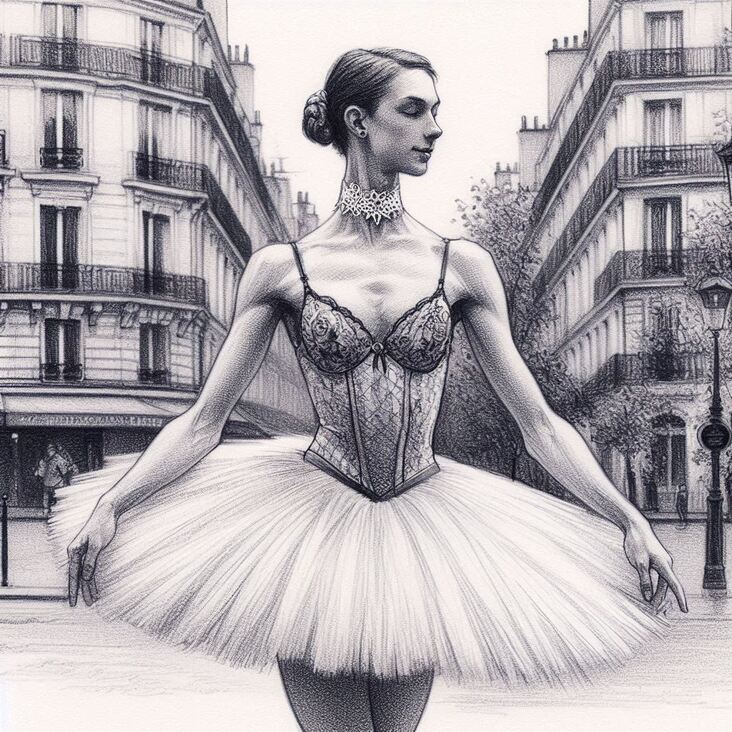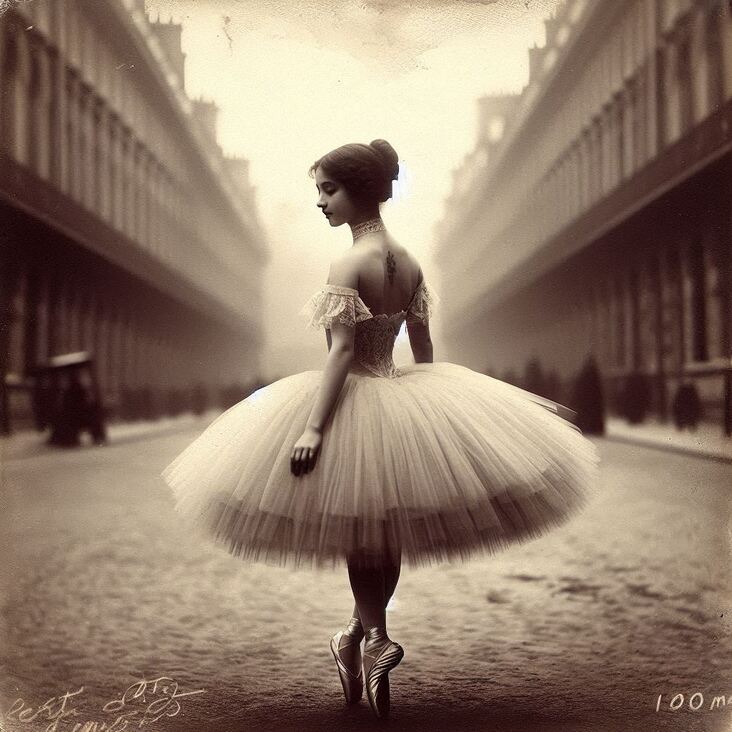
Hello darling ballet bunnies! It’s Emma, your pink tutu-loving time traveller, back with another delightful delve into ballet history. This month, my magical Meg whisked us back to a crisp October day in 1759. Oh my, what a world it was!
As we trotted through the streets, I couldn't help but marvel at the cobbled paths and bustling market stalls, all adorned with the most charming, old-fashioned costumes. Think ruffled collars and long, elegant coats - so utterly chic, even without a pink tutu!
I’ve been working on convincing my lovely Meg to allow a spot for a pink tutu on her back. Just imagine, wouldn’t that be glorious? A pink tutu, a white mane and tail, sparkling golden hooves – such a stunning combination!
Back to 1759!Our trip led us to the quaint town of Birmingham. Can you imagine, darling? Birmingham was still a relatively small, yet bustling town. What it lacked in size, it certainly made up for in atmosphere.
Now, it's important to note that in 1759, ballet was still finding its feet (pardon the pun!) It was in the early stages of its evolution, a far cry from the dazzling spectacles we enjoy today. However, it was an incredibly exciting time - a period of blossoming artistic expression.
And here’s where the story gets particularly fascinating! This was the year the esteemed Jean-Georges Noverre published his iconic “Letters on Dancing and Ballets”. This revolutionary work outlined a new philosophy of dance that was a stark contrast to the prevalent ballet tradition at the time. He emphasized the importance of naturalism and storytelling in dance. Noverre challenged the rigidity of ballets based solely on virtuosic techniques, encouraging dancers to portray true emotion. Imagine, telling a story through movement – just like our ballet bunnies do today!
We ventured to the Birmingham Theatre Royal. Although not quite ready for the elaborate sets and grand designs we know today, the playbill advertised “The Fall of Phaeton, A Burletta” - oh, my darling bunnies! A Burletta is essentially a playful opera with a mix of music and dialogue. The ballet component in such shows, I imagine, was limited, but nevertheless, this signifies the integration of dance into entertainment, much like the graceful waltzes in modern musicals.
Back in the day, people dressed to impress! A playhouse like the Birmingham Theatre Royal would be bustling with elegantly attired ladies and gentlemen, witnessing captivating stories unfold onstage. Can you just imagine the sheer grandeur? It certainly paints a delightful picture for me.
And, what about fashion in this era? My! Imagine all the exquisite satin, brocade, and lace. There's no telling what exquisite dresses adorned these ladies as they attended the theatre. Sadly, tutus were yet to appear, although the style of the dancers' attire probably involved flowing skirts that allowed for some flexibility of movement, albeit with more of a swish than a leap!
Perhaps a tutu wouldn’t have been entirely out of place in this era? Just a soft, billowing skirt with perhaps some ribbons here and there… Now there's an idea for my next pink tutu project. Imagine a 1759 inspired pink tutu!
This trip left me yearning to experience this exciting chapter in ballet history. To step onto those historical theatre boards, dance amidst the powdered wigs and lace ruffles, and immerse myself in the birth of a new ballet era… My darling bunnies, just imagine the stories we would create, the beauty we would unfold!
Of course, I do have some ballet stories for you, so have a read and get in touch! Tell me what you love about ballet – we can chat about it in our fabulous ballet corner!
See you soon, my loves! And, always remember to embrace your pink tutu!
Emma
xx
